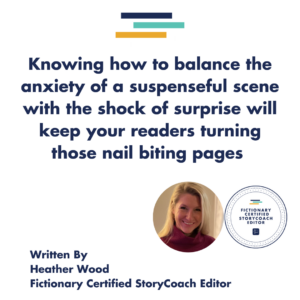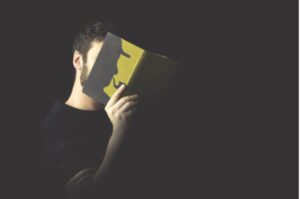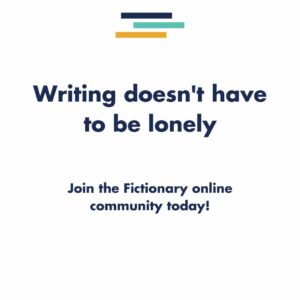
For writers of thrillers, mysteries, and horror, understanding how to use suspense and surprise is an important part of their craft. But while these writers perfect the gripping, page turning anxiety readers in such genres crave, understanding the concept of suspense vs surprise (and the difference between them) is important for all writers to utilize in their writing, especially if they want to create strong pacing.
Suspense vs Surprise: What’s the Difference?
Since bombs exploding, shadows lurking, and characters being chased are obvious scenes to consider surprise and suspense, let’s first look at these ideas in an unlikely setting.
Imagine….
A young couple is walking along a wooded path on the anniversary of their first date.
The young man is recounting all the way he first noticed the young woman, the way her perfume smelled, the way her shoulder brushed against his on that first walk, the way his heart skipped.
They are heading toward the end of the path where, by a beautiful lake, he first kissed her. When they walk through the last trees into the clearing she sees all of their family and friends waiting for them.
The young man’s best friend quickly hands him a box, and the young man drops to his knee to propose.
In terms of suspense vs surprise, this description of a scene is surprise.

Now imagine this version…
A young couple is walking along a wooded path on the anniversary of their first date.
The young man has been planning this walk for weeks, ever since he bought an engagement ring. However, as they begin their walk, he reaches into his pocket to find the ring missing.
He begins to sweat.
Their family an friends are waiting at the end of the walk to watch him propose. He begins to nervously recount their first date, hoping to distract his girlfriend from the his stress over the lost ring.
As they near the clearing, his heart rate escalates, until he sees his best friend rush toward him, drop the ring box into his hand and, with relief, he drops to his knee.
In terms of suspense vs surprise, this scene description is suspense.
Nothing blows up. No one is hiding in a corner or running for their lives. But in these two instances the most important distinction when it comes to suspense vs surprise is shown, namely in the way information is revealed to the reader.
Suspense vs Surprise: Suspense
A writer can create suspense by showing the reader information the character does not yet know. This information allows the reader to make predictions and form expectations they know will surprise the character.
The writer can intensify the suspense by holding back information which will have a
maximum impact on a character.
The following are examples of information a writer can reveal to create maximum impact of suspense:
- Will cause bodily harm or death
- Puts loved ones at risk
- Puts whole groups of people at risk
- Will change the course of one’s life permanently
For more in depth ways a writer can create suspense in their writing, read Shane Millar’s article.
Suspense vs Surprise: Surprise
A writer can create surprise by holding information back from the reader. In these scenes, neither the reader nor the character expects what is revealed. A writer can create maximum impact of surprise on a reader by ensuring they have held back enough information, so the reader is unable to make predictions or have expectations of the reveal.

Examples
Craig Silvey’s award winning novel Jasper Jones (2009), is marketed as a young adult novel, however Silvey shows his skill at creating surprise and suspense with a mystery story.
Consider this scene of surprise when Charlie, the young narrator, realizes his life is changed in one night:
“I’m screaming, but they are muffled screams. I can’t breathe in. I feel like I’m underwater. Deaf and drowning. Jasper Jones has a hand pressed over my mouth; another across my shoulder, pulling me in toward him. My hips lurch back, back, back, out of here, but my feet are rooted to the clearing. Blessedly, my eyes cloud over with tears and obscure it all until they are blinked away. And it’s there before me again. Jasper has me hard. He covers my thin frame easily. It’s horrible. Too horrible for words. It is a girl.”
In the above scene, neither the reader nor Charlie knows what Jasper is taking him to see in the clearing. And when this surprise is revealed, the impact is felt with great tension. With this scene, Silvey sets his mystery in motion at a cracking pace.
At another pivotal moment, the reader has come to understand some of what Charlie has not been able to work out for himself about a suspicious character. The reveal is one the reader is anticipating, and the suspense of knowing for sure creates tension throughout the scene:
“He’s silent for a while. Then he shakes his head quickly, like a dog trying to loosen something from its collar. He backs away a step… Asks where he got them from. But Lionel quietly points to another photograph, the smallest one. This time, an older man holds the same baby, and it’s then that Lionel reveals to Jasper what I know already to be true. The man is him. Jack Lionel is his father’s father. Jasper’s grandfather.”
Toward the end of the novel, the reader learns the truth about a character Charlie has suspected to be the killer for most of the story. However, Silvey spends much of the text showing the reader that while Lionel has a secret, he is not a killer.

Conclusion
No matter what genre you explore with their craft, knowing how to balance the anxiety of a suspenseful scene with the shock of surprise will keep your readers turning those nail biting pages. That is the true art of mastering suspense vs surprise.
Article Written by Heather Wood
 By combining my experience of teaching writing at the secondary level with a Fictionary StoryCoach Edit, I will help you strengthen your story while honouring the care and effort you have dedicated to your art.
By combining my experience of teaching writing at the secondary level with a Fictionary StoryCoach Edit, I will help you strengthen your story while honouring the care and effort you have dedicated to your art.
Want to be part of a writing and editing community with kindness at its heart?
Do you know about the free Fictionary community? We’re connecting writers and editors who all speak the same story editing language.
You’re most welcome to join.
- Connect with other writers and editors
- Get your editing questions answered by Fictionary Certified StoryCoach editors
- Access free, live editing classes presented by editing experts
- Learn about all things Fictionary: product updates, videos, webinars, best practices


